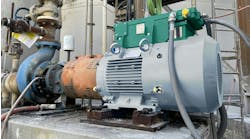Last Friday's employment report cast a pall over the economic outlook. Headline jobs growth of just 38,000 was much weaker than expected and left us all wondering whether the Federal Reserve would wait longer to raise interest rates. The manufacturing sector shed 10,000 jobs, and has shown job losses in three of the past four months.
Year-over-year growth in manufacturing employment has been negative for three months in a row, and it would appear that whatever manufacturing employment renaissance occurred in the years immediately following the Great Recession is over.
But why?
Part of the answer came this week in the Job Openings and Labor Turnover Survey, which suggests that manufacturing employment weakness may be a result of a lack of labor supply, not lack of demand. Manufacturing job openings in April jumped to a 15-year high.
Additionally, the ratio of manufacturing job openings to manufacturing job hires jumped to an all-time high, suggesting that employers are struggling to find workers to fill open positions.
In addition, manufacturing layoffs continue to hover near the lows of this cycle. For the most part the manufacturing sector has had fewer layoffs this cycle than it did during any point of the last cycle.
From last Friday's employment report, we can see that over the past year, manufacturing wage growth has outpaced overall wage growth, and for the most part manufacturing's relative strength has been increasing for over a year.
And for a couple years now, the unemployment rate for manufacturing workers has been broadly similar to what it was during the strong economy years of 2005-7.
While losses in manufacturing employment look like a sign of weakness, the other numbers complicate that assumption: Increasing numbers of job openings, an increase in the openings-to-hires ratio, low levels of layoffs and unemployment, and above-average levels of wage growth suggest that the manufacturing labor market is actually quite robust.
How might employers respond if a shortage of manufacturing workers is leading to increased pressure from labor cost? One possibility is increasing overtime hours for existing workers. Another, if output from existing workers is nearing its limit, is increasing wages to draw workers from other sectors into manufacturing, even if this higher pay results in lower profit margins.
The other possibilities are more troubling to the U.S. economy. Employers could simply decide to keep output at its current level, forgoing growth. This may already be happening. It's certainly what the high and rising level of job openings suggests, in an environment where overall manufacturing employment is falling.
A worse outcome for the U.S. economy would be for employers to conclude they can't find enough workers in the U.S. to meet production demand, and decide instead to move production overseas for deeper and cheaper labor pools.
The question for the Federal Reserve is how to respond if these rising cost pressures lead to rising inflation, even at a time when overall employment and economic growth may remain muted. Would the Fed choose to snuff out an economy growing at 2% or 2.5%, in order to stick to the inflation mandate? The economic outlook for the next couple of years hinges on the answer.










